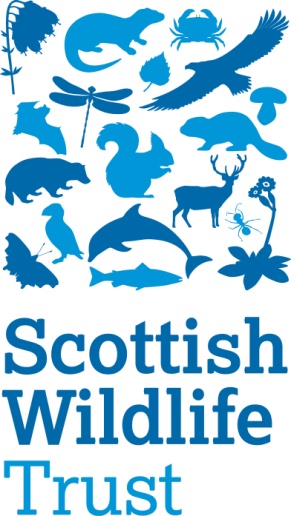The Scottish Wildlife Trust has set out a new approach to the way that Scotland’s uplands are managed, including financial incentives to encourage good environmental stewardship and regulations that achieve more sustainable management of deer and upland grouse moors.
The Trusts’ publication ‘Living Landscapes in the Scottish Uplands’ recommends ten key changes that are needed to reverse decline in important habitats and ensure that people continue to enjoy the benefits provided by these areas.The paper will be launched on Wednesday 6 July at an event held at the Scottish Wildlife Trust’s Woodhall Dean Reserve.
Almost half (44%) of Scotland’s land area is classed as upland. This area contains important habitats that are in a state of decline including peatland, heather moorland and native woodland.
Susan Davies, Director of Conservation at the Scottish Wildlife Trust said: “With a shift in public attitudes and changes in how we manage our land, we could transform Scotland’s uplands. Sadly, our uplands are currently under threat on a landscape scale from a wide range of pressures including intensive land management, invasive species and poorly-targeted public subsidies. This is bad for wildlife, bad for communities and bad for Scotland.”
Indeed shocking statistics showing that between the 1940’s and 2007 more than 20% of heather moorland cover was lost, mainly due to afforestation and conversion to rough grassland. While these habitats have begun to recover in recent years, fens, swamps and marshes have continued to decline
Davies’ comments were echoed by Graeme Dey MSP, Convenor of the Scottish Parliament’s Environment, Climate Change and Land Reform Committee, who said “The worsening impacts and incidents of flooding, the debate around grouse shooting and the management of moorland to accommodate this, the pressing need to plant more trees, and the fact the deer management issue is coming to a head”.
He praised the Scottish Wildlife Trust’s blueprint saying, “Scottish Uplands represents a positive contribution to the discussions we need to have around the future role of our uplands.”
Ten key recommendations from the Trust’s publication, ‘Living Landscapes in the Scottish Uplands’:
- Incorporation of Ecosystem Health Indicators (EHIs) and Natural Capital Valuations (NCVs) into all relevant policy instruments.
- Integrated Land Management plans that secure sectoral cooperation to improve the condition, services and benefits from upland ecosystems.
- Reform of subsidy regimes for upland sheep and cattle farming to encourage low stocking densities and ‘agro-forestry’ systems.
- Financial incentives for low-impact forest management in commercial upland plantations.
- Wildlife-rich networks in areas between protected sites that support natural dynamic processes and succession.
- Regulation of deer and upland grouse moor management to encourage more sustainable management practices.
- Re-introduction of lost species such as Eurasian beaver and Eurasian lynx.
- New statutory guidelines to mitigate the impacts of energy developments








